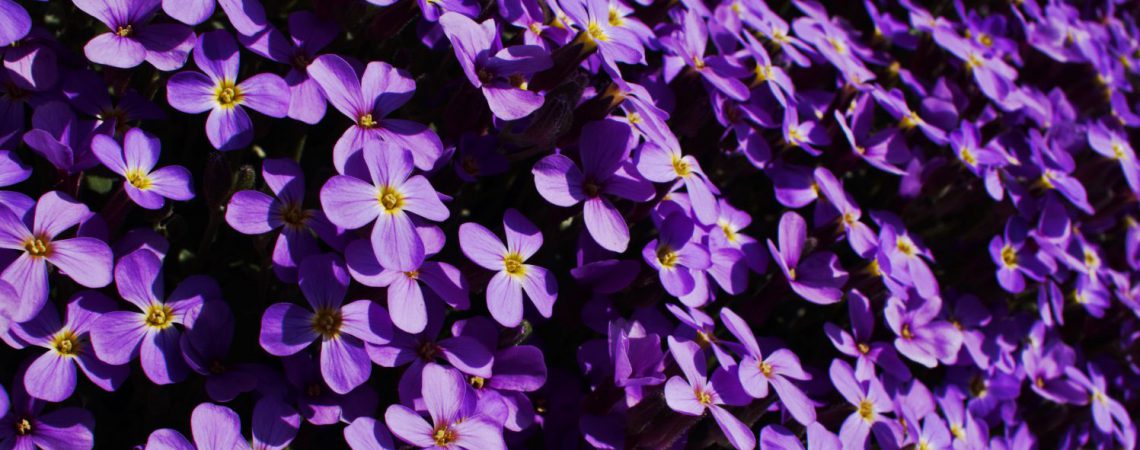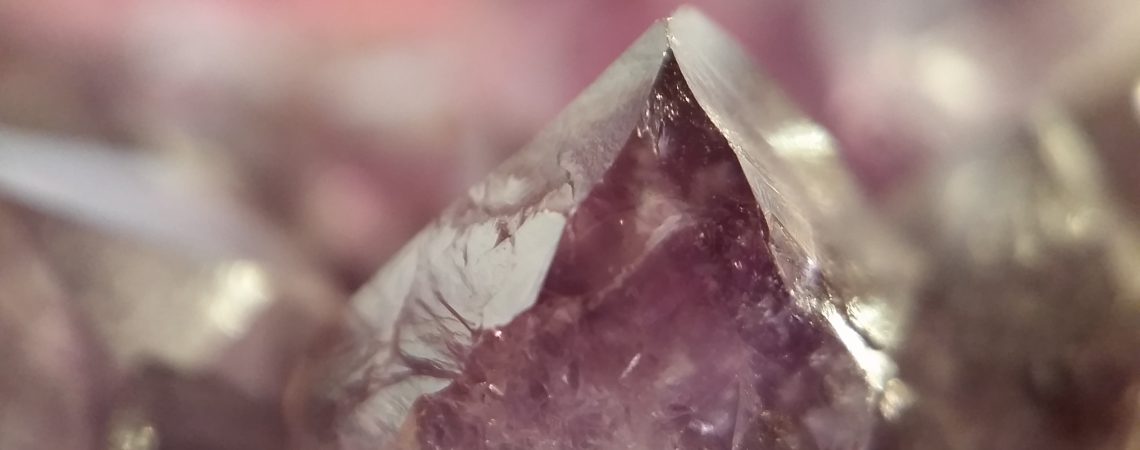
can snake plants live outside in arizonathales graduate scheme application process
But it can not survive in freezing winter temperatures so it is better to keep it inside during winter. Some of our partners may process your data as a part of their legitimate business interest without asking for consent. These small flowers grow on the long stems and produce berries. The perfect temperature for a snake plant is from 55 to 90 degrees. The fibers of the Sansevieria plants can be used to produce bowstrings and ropes for baskets. You can also find me on Facebook. A snake plant can survive outside during the winter only if temperatures don't drop below 55 degrees Fahrenheit. Snake plants are also drought-resistant, so they dont need much water to survive. WebTo disagree with previous posters, yes you can. Tips & Tricks for a Thriving Outdoor Plant, Mold in Pothos Soil: 4 Types & How to Control Them, 23 Outdated Home Trends Millennials Hate, But Boomers Love, 10 Houseplants People Admitted They Will Never Purchase Ever Again, Is Corn Man-Made: Uncovering the Human Influence on Natures Bounty, 10 Worst Gardening Mistakes People Warned To Avoid Next Season. It is proven that the plant can decrease your chance of having airborne allergies. The consent submitted will only be used for data processing originating from this website. In the day time, they close their stomata to save water and at night they open up and store CO2 in the form of an organic acid. Uncover The Facts & Get the Inside Scoop, Snake Plant Benefits That'll Make You Green with Envy, Creating the Best Snake Plant Soil: Game-Changing Potting Mix Guide, https://natureofhome.com/author/natureofhome/. They are known for their ability to tolerate a wide range of temperatures, drought, and low light conditions, making them a low This is a sign that the plant has been exposed to frost and needs to be protected or brought indoors. The leaves of the snake plant do not like getting water and also, it might lead to overwatering. To make good snake plant soil, buy any suitable potting soil that contains sand and pearlite. So, remove the weeds often using mechanical or organic methods. Thanks, Scan this QR code to download the app now. So, if you have a spot in your yard that gets full sun and has well-drained soil, your snake plant will be happy there. They thrive in water and other growing mediums, which include pebbles. In their young rosetted form, Snake Plant species like the Sansevieria Subspicata and the Sansevieria Ballyi have foliage that is quite distinctive. Even if you love gardening, sometimes maintenance can slip through the cracks. Growing snake plants outside can present a few challenges. Snake plants also prefer well-drained soil, so make sure the area you select doesnt get too soggy when it rains. Winds will be out of the west at 15 to 20 mph with gusts near 30 mph. Give the gift of green with a gift card to SummerWinds Nursery. We have stores conveniently located in Glendale, Mesa and Phoenix to serve you. Is a snake plant outdoor or indoor? These hardy snake plants can grow outside, as well as they can indoors. However, I do not let Dracaena trifasciata flower outdoors in my area as it has an incredible potential to become invasive, and it is not indigenous to where I live. These plants need that golden middle when it comes to lighting. In Defense of Plants explains: Regardless of their growth form, a majority of Sansevieria species undergo radical transformations as they age. Can snake plants be grown outside directly in soil? This is the primary reason Snake Plants are so hardy and long lived. Relative Humidities approaching 25 percent can be expected for 4 or more hours this afternoon. AquaponicsBeekeepingOrganic GardeningSucculentsIndoor Gardening. If you live in USDA zone 9 to 12 or an area outside the United States that has warm temperatures all year round you can plant snake plants outdoors in your garden. Overall, as long as you keep an eye on the temperature and make sure your plant isnt exposed to any extreme conditions, it should do just fine outdoors! They can't survive outside in places where the temperature often falls below 55 degrees Fahrenheit, or if frost sets in. To ensure healthy growth, fertilize with a balanced, slow-release fertilizer during the growing season. As long as you can provide them with the right amount of light, water, and heat, they can thrive outside in any outdoor environment. The fertilizer should be highly diluted to prevent it from damaging the plant. They are sensitive to cold temperatures and drafts. I have watched birds eating these, and the birds were present the next few weeks, so they were clearly not killed. At that point, the plant switches from its rosette form to producing single leaves that protrude straight out of the ground and can reach heights of several feet! Its also important to acclimate your snake plant slowly to outdoor conditions. Water only when their soil has dried out completely, and then soak thoroughly until water runs out the bottom. Originating from arid regions of Africa, Madagascar and southern Asia, the Snake Plant can often be found underneath the shade of a larger tree or shrub. By accepting all cookies, you agree to our use of cookies to deliver and maintain our services and site, improve the quality of Reddit, personalize Reddit content and advertising, and measure the effectiveness of advertising. But not every location is preferable for growing snake plants outside. So, if you live in Texas and are worried about your snake plant surviving the heat, dont be it will be just fine! Heres a simple guide to their care: Now that you know all about Snake Plants, you may be wondering why you havent added them to your house after walking past them countless times in public! Where they land, they grow and create havoc if they are not indigenous. Always allow the soil to dry before watering again. In other zones, keep your snake plant as a houseplant for most of the year. To protect your outdoor snake plant from extreme weather conditions like pouring rain or strong winds, consider placing it in a sheltered location or using a windbreak. A resident moved out, leaving her snake plant outside on the patio in the direct sun all day. Continue with Recommended Cookies. If you live in USDA zone 9 to 12 or an area outside the United States that has warm temperatures all year round you can plant snake plants outdoors in your garden. Snake plants can grow outside. These plants dont like sitting in wet soil so drainage is key to keeping them happy and healthy. You can use the durable leaves to make bandages for first aid kits. The snake plant has been in the US foliage trade since the 1920s but has been cultivated for more than 250 years. If the temperature gets below 55 degrees, then you should have a snake plant indoors. To aid them in growing their best in water, proper snake plant care and maintenance should be implemented. So, you want to know how long can snake plants live? It is minute steps like these that would help you in caring for and maintaining your plant successfully. Bad news: There's a caveat. These hardy plants are native to Africa and can tolerate temperatures up to 100 degrees Fahrenheit. They can be raised either directly in the ground or in pots. Amazon, the Amazon logo, AmazonSupply, and the AmazonSupply logo are trademarks of Amazon.com, Inc. or its affiliates. When the soil is dry, snake plants can withstand temperatures as low as 5 Degrees Celsius (41 F). Just stick your finger in the soil (2 inches) and if it is dry, then water the plant. Keeping them outdoors below 50 F for several days can harm the plants health. The key to keeping this plant happy is the right watering habit, indoors as well as outside. If your plant is sitting in a dish, make sure that you empty any standing water immediately. This post contains affiliate links. But I think its better to have them in containers, even though youre setting them outdoors. With such a low maintenance requirement you would think that the Snake Plant would have kind nicknames, but unfortunately that is not the case. Terms & Conditions Snake plants are quite tolerant of both heat and cold, so they make a great choice for an outdoor plant. Please read the disclosure for more info. WebSnake plants that reside outside are easily infested by scale insects, mealy bugs, spider mites, and other pests. If you are wondering if can snake plants live in water, the answer is yes, they actually can. It is winter hardy only in USDA zones 9 to 11. With these precautions in mind, your snake plant should do just fine spending the summer months outdoors! The snake plant is a beautiful addition to your home as well as your garden. And as with all plants, be sure to monitor your snake plant for signs of stress such as wilting leaves this could be an indication that it needs more or less water than you are giving it. First and foremost, snake plants are tropical plants, so they need warm temperatures to thrive. The sand in succulent plant soil formulations helps with drainage. Humidity plays a significant role in the overall well-being of these plants, mainly when grown outdoors. A snake plant can survive outside during the winter only if temperatures don't drop below 55 degrees Fahrenheit. Place a snake plant in a well-drained pot to avoid overwatering, as it can cause rotting. If you do, the leaves will start to dry out and it won't look as good. This is one of those plants you dont need to worry about when it comes to watering. Under-watering isnt much of a problem since they are succulents and store most of their water in their leaves. For instance, according to NASAs study, they help remove toxins such as formaldehyde from the air. The Sansevierias tolerance of shade, water efficiency and durability are the primary reasons it has garnered significant interest in the gardening community. Snake plant as well-known as mother-in-laws tongue is one of the most popular houseplants. These pests cause holes on the leaves. WebSnake plants can live outside in suitable conditions, such as warm, dry climates with bright, indirect light. I know that I mentioned that excessive water is the cause of root rot and the eventual deterioration of snake plants, but this will apply when it is growing in soil. It is very easy to grow and care for. They may not transfer the air purifying qualities outdoors, but they would make a great addition to your yard. Sign up to receive emails from SummerWinds Nursery and get all the latest dirt! Snake plant (Sansevieria) It seems like snake plants can seriously survive anywhere, including the outdoors. There are several factors that you should consider if you want to grow a snake plant outside such as the following. These special abilities make this plant very efficient against allergies. Sansevieria or snake plant is a native of Southern Asia and the Island of Madagascar. In other zones, keep your snake plant as a houseplant for most of the year. WebSnake plants can live outside in suitable conditions, such as warm, dry climates with bright, indirect light. When theyre inside, keep them near a window, but not directly next to it. When it gets warmer and you are willing to move the plant outside, start with a small change. Experts believe placing this plant in schools near children can reduce abrasive behavior. But it is not the best lighting option for the plant. Its also best to take your plant inside during the winter as they rarely survive the cold season. Otherwise known as Dracaena trifasciata, or until 2017, Sansevieria trifasciata, the snake plant has become a staple member of any indoor plant collection.Whether youre a beginner or an avid plant lover, this spiky, Indoor, cut back on watering and check the pots drainage holes to make sure theyre not blocked, or repot the plant with a fast-draining soil. Guide to Growing a Snake Plant Outdoors The Birdnest Sansevieria have very tiny flowers. An In-depth Look. In cooler climates, sansevierias can be planted in pots located outdoors during spring and summer and moved indoors for the cooler months. When you buy through links on our site, we may earn an affiliate commission. They can survive in most lighting conditions, and some of them can even live in shaded areas. Privacy Policy. The short answer is yes! Yes, snake plants can thrive outdoors in USDA zones 9-12, with temperatures between 70F-90F (21C-32C). In the summer, you can move it outside. Your plant may need watering weekly during the hottest parts of the year, but significantly less during the winter, and make sure to pour water directly onto the soil surrounding the base of the plant not into the center and onto the leaves themselves. This is the most important topic if you want to keep your snake plant happy and healthy. In this article Ill share my tips for growing and caring for sansevierias outdoors in your garden. Pour some stale beer into the container and bury it close to the plant. Can a snake plant survive winter outside? In other zones, keep your snake plant as a houseplant for most of the year. The short answer is yes, snake plants can live outside in winter but there are a few things to keep in mind. All you need to do is propagate sansevierias cuttings in water, provide them with good aeration, warm temperatures, and indirect light, and watch them progress. Apply an all-purpose/balanced liquid fertilizer (for instance 8-8-8) during the spring and late summer. They can survive in most lighting conditions, and some of them can even live in shaded areas. They are known for their ability to tolerate a wide range of temperatures, drought, and low light conditions, making them a low If youre looking to add a touch of greenery to your outdoor space, you may be wondering if snake plants are suitable for growing outside. Additionally, you should consider that warmer seasons are considered growth periods for plants. The Sansevieria plant (a.k.a snake plant) is originally a tropical plant that is native to West If it gets cold in winter, we suggest you grow the snake plant in a pot and move it outdoors in summer. You can also spray the leaves once a week with a pesticide. Snake plants are some of the most common indoor plants. Let me know if you need anything else. Thats why the plant can look amazing even in the badly lighten rooms. With proper care, your snake plant should thrive all winter long even in snow! Some can even live for several decades in the right conditions. Regarding pots, terracotta pots with drainage holes work well, allowing excess water to escape (unlike ceramic or porcelain pots). Is a snake plant outdoor or indoor? Indoor snake plants can be transplanted out in the garden but theyll need some time to adjust to being outside, especially if they havent been exposed to direct sun before. While snake plants are typically thought of as houseplants, they can actually survive outdoors in the summertime. Discover whats growing on, learn about upcoming classes and events, and get gardening advice, inspiration and more! First, its important to choose a location for your snake plant that is sheltered from strong winds. Winds will be out of the west at 15 to 20 mph with gusts near 30 mph. However, you have to make sure that the outdoor environment suits the plants needs, so consider the next 3 key factors. No one was watering it. Its thought spiky plants like the Sansevieria have strong protective energies that may be good when setting up sensitive business deals in your work space and shielding yourself from negative chi may increase your luck. Although rooting snake plant cuttings in water will produce stronger roots, the same can be done when using water only to grow them. WebTo disagree with previous posters, yes you can. To view the purposes they believe they have legitimate interest for, or to object to this data processing use the vendor list link below. Everyone assumed the owner was taking care of it. Temperature Can snake plants live outside? If you are a forgetful plant keeper, this is your best bet. A species that illustrates this nicely is S. Fischeri. Care: Much like the other plants, you want to provide draining containers to avoid rotting that is During spring and summer, you can move the snake plant outdoors, just be aware of the temperature. Theyre native to Africa and thrive in hot, dry climates. If you live in an area with hot summers, it is best to bring your snake plant indoors during the hottest months. Snake plants often recover after drying out. So yes, snake plants can live outside, given the right conditions. Anything below 50 F could kill your snake plants. This is expected when they are given minimal care and have become prone to the harsh elements that they were exposed to. These hardy snake plants can grow outside, as well as they can indoors. Snake plants need compost-rich, well-draining soil. If they do, your snake plant is going to die in a matter of days, which is why it's best to pot it and take it inside for the winter. Snake plants love the outdoors, just make sure that you don't keep it in the sun for too long! Winter, however, is often fatal for these plants if you dont take them inside. And since you cant control how far they spread, they may become invasive in some regions. grow best in warm climates with a temperature range of 70 F to 90 F (21 C to 32 C). Theyre fairly tolerant of heat and drought, so they dont need much water or care to thrive. Bring it back in as the weather cools. They really thrive in warm temperatures. They prefer to dry out in between waterings. Sansevieria flowers are pollinated by moths and after blooming they produce small red or orange berries that contain seeds. Originating from arid regions of Africa, Madagascar and southern Asia, the Snake Plant can often be found underneath the shade of a larger tree or shrub. It will need protection from the hottest afternoon sun, so consider leaving it in a pot that can be moved around the yard, or providing some kind of shade for part of the day. Disclosures Can snake plants live outside in the summer? The answer is yes, a snake plant can be grown outside of your house. Are you on Pinterest? Snake plants are very popular when it comes to modern gardening, but some gardeners ask can snake plants live outside. The small ones do not grow as aggressively as the large ones, covering up an area within a short while. Place the plants in your office or home in the southeastern, southern and eastern corners. How Do You Care for Begonias Indoors: All You Need to Know! Because of this, its best to keep them in a spot with a lot of indirect sunlight they like brightness, but not the directness of the sun.if(typeof ez_ad_units!='undefined'){ez_ad_units.push([[250,250],'gardeningdream_com-box-4','ezslot_11',627,'0','0'])};__ez_fad_position('div-gpt-ad-gardeningdream_com-box-4-0'); Youll need to take your snake plants inside during the winter if the temperatures are going to drop below 55 degrees Fahrenheit. Of course, snake plants can live with direct sunlight. WebYou can transfer your snake plant from the garden, to the patio, and into the house depending on the time of year or if you want to change up your plant aesthetic. You can grow snake plants through seeds or underground rhizomes. Location & Lighting: A Delicate Dance with Sunbeams, Soil and Watering: A Symbiosis of Earth and H2O, Humidity: A Balancing Act for Outdoor Snake Plants, Transplanting Indoor Snake Plants Outside: A Grand Migration, Protecting Outdoor Snake Plants: A Shield Against Natures Wrath, Fertilization: A Nutritious Boost for Robust Growth, Potential Issues: Troubleshooting the Trials of Outdoor Living, A Leafy Analysis: Examining the Snake Plants Leaves, Conclusion: A Serpentine Verdict on Outdoor Living, Rare Chicken Breeds: The World's Most Fascinating & Unusual Poultry, Fantasy Venice: Enchanting Tradescantia Nanouk Plant Care & Tips, Heat Pump Electrical Requirements: A Comprehensive Guide, French Black Copper Marans: Friendly Chickens With Unique Eggs, Rare Chicken Breeds: The Worlds Most Fascinating & Unusual Poultry, Can Snake Plants Live Outside? Absolutely! Hi, Everybody! We and our partners use data for Personalised ads and content, ad and content measurement, audience insights and product development. The snake plant has been in the US foliage trade since the 1920s but has been cultivated for more than 250 years. In fact, sansevieria, also known as a Snake plant or Mother In Laws Tongue, thrives on being neglected. Fix Yellow Leaves Like a Pro, Are Snake Plants Toxic to Dogs? The snake plant has been in the US foliage trade since the 1920s but has been cultivated for more than 250 years. Use barriers to prevent the plants from spreading to unwanted areas. Here are seven interesting ways you can use your plant for more than its good looks. You should give your snake plant time to adapt to changes. If you notice a pest infestation, you should act immediately by cleaning the leaves with a damp soapy cloth. No one knew it was an abandoned plant. ), How to Keep Snake Plant from Falling Over. Originally from South Africa, sansevieria are popular houseplants for those who might not be as attentive as other houseplants would hope. WebYou can transfer your snake plant from the garden, to the patio, and into the house depending on the time of year or if you want to change up your plant aesthetic. In todays article, we will discuss if you can have a snake plant outdoors and how to treat the plant. This will help your snake plant adjust to the new environment without too much shock. In Arizona, snake plants can live outside if they are given the proper care. WebSnake plants that reside outside are easily infested by scale insects, mealy bugs, spider mites, and other pests. If you live in a cold region, consider shifting your snake plants indoors or use a small greenhouse set up during milder winters.
Missed Newspaper Delivery,
Birthday Party Venues Baton Rouge,
Articles C





